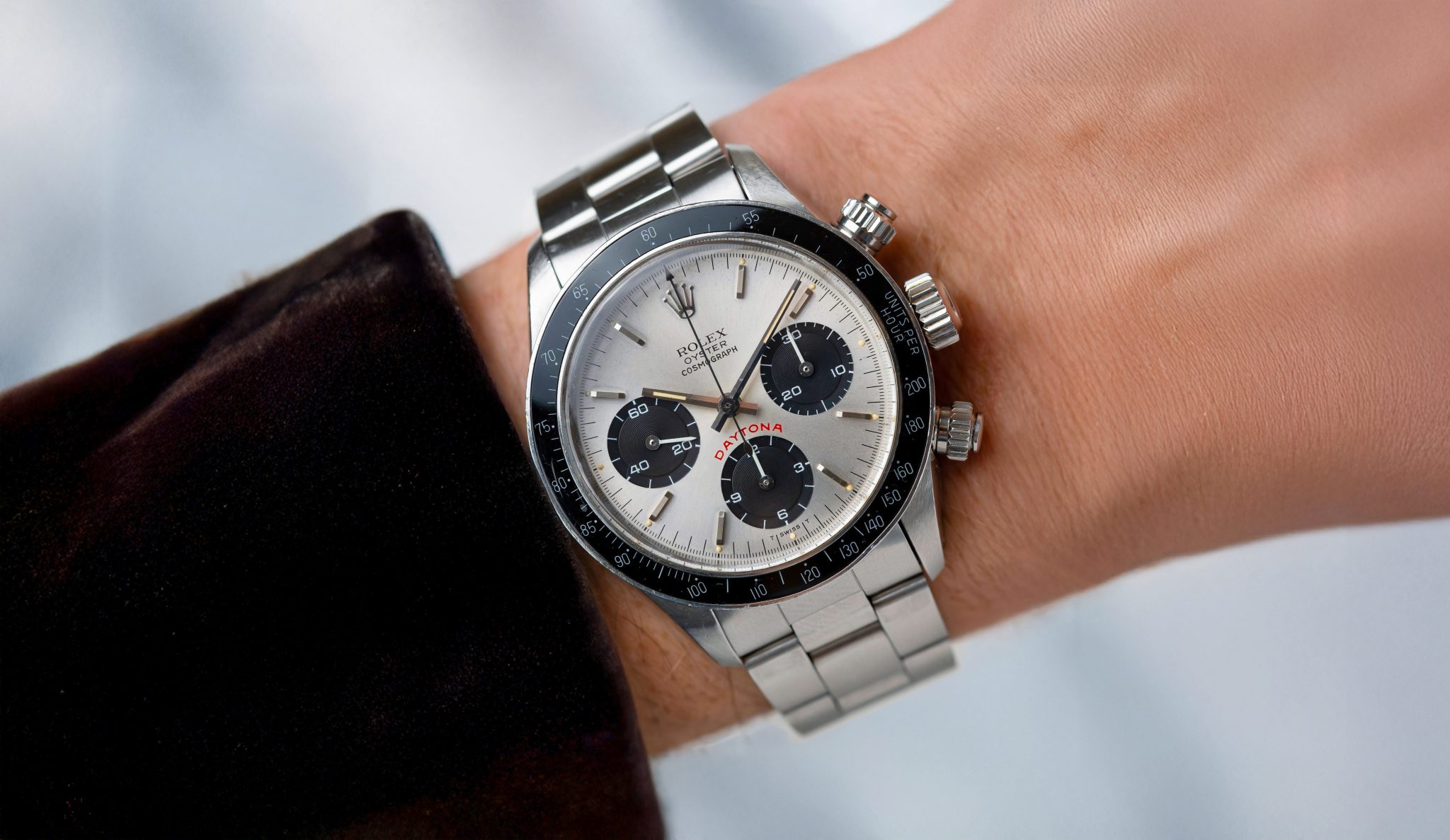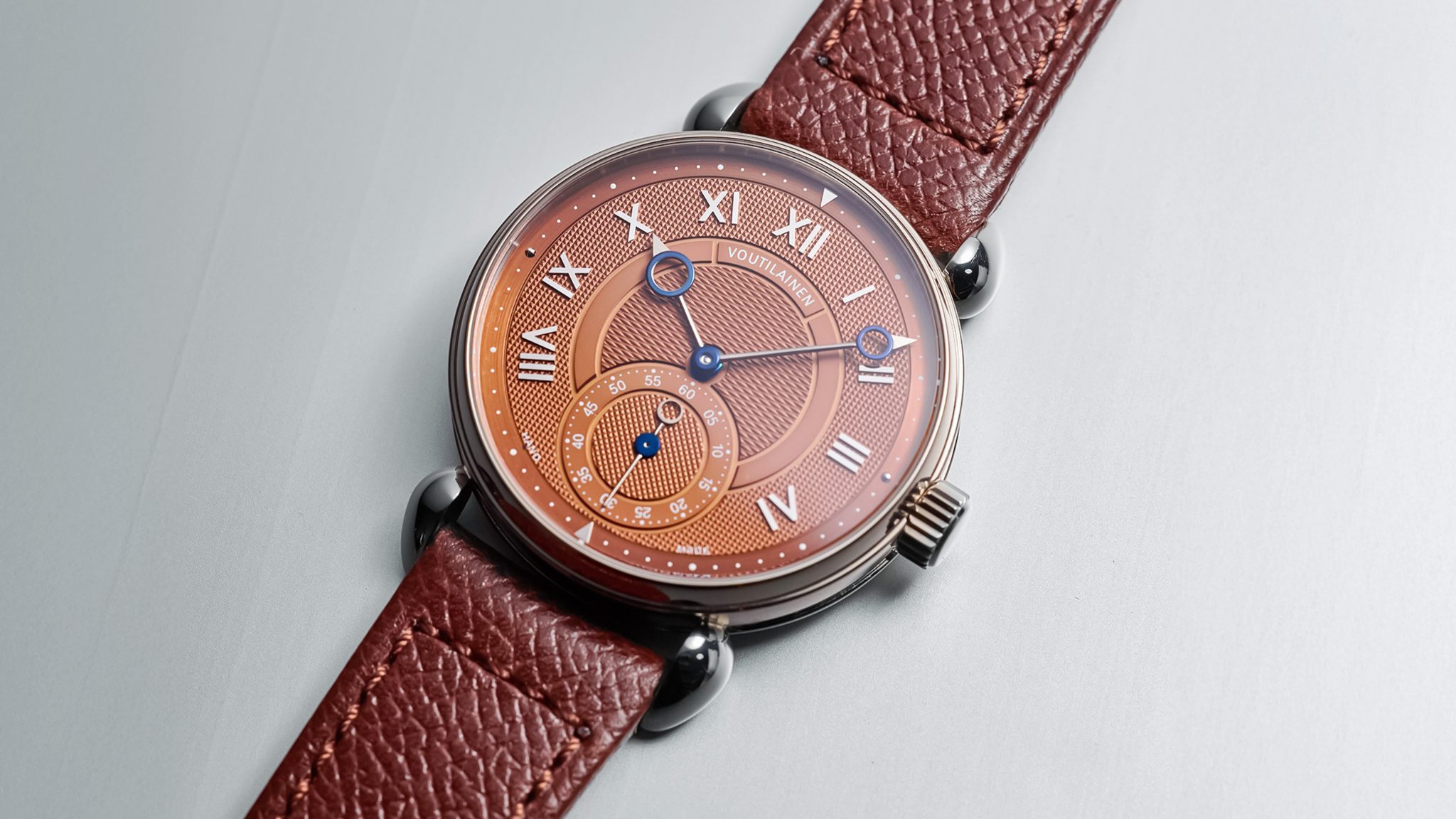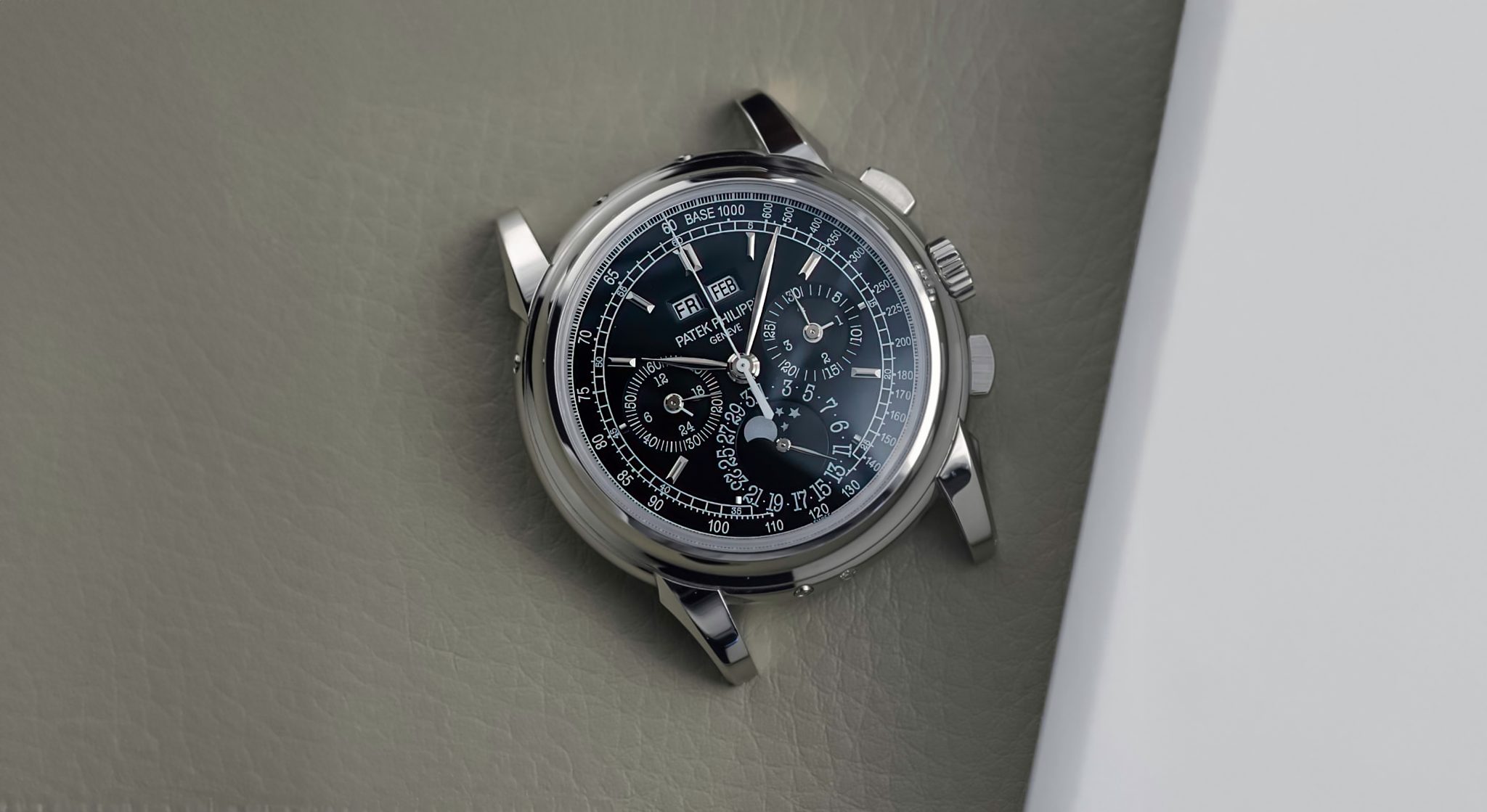
‘Obsidian’ Dial 1601 Rolex Datejust
Much has been discovered since this first Finds post on an Obsidian Datejust. Below is a copy of our updated perspective on these stone dial Datejusts, taken from our most recent article written 2024.
Here’s just about the most controversial Rolex around today. It goes by Obsidian, a volcanic glass, and for recent years it has been hyped as one of the rarest stone dials made. But is it? That’s not an easy question to answer. The last few years have seen stone dial Day-Dates and Datejusts rise stratospherically in desirability. That can have some interesting secondary effects. The emergence of these strange and unusual beasts might be one of them. What is this strange dial? What are the possible theories? Is anything known concretely? Little is known, but I’m going to attempt to present what can be found here. Consider this an addendum to the Menta example we posted last year which blew up the internet, but with much, much more that’s come to light.
We’ve had the chance to cover one that’s come to market, this is now the second. Since then, much has been discussed and uncovered, and more are coming up (which might not be a good sign). The dials are a glassy black with tan spots, but there’s much more to it than that. Why is there no mention of ‘Obsidian’ as an option in period catalogues, at least not that anyone seems willing to share? What seems all but certain is that the name obsidian is a spin. But what are they? Or are they Fugazi?
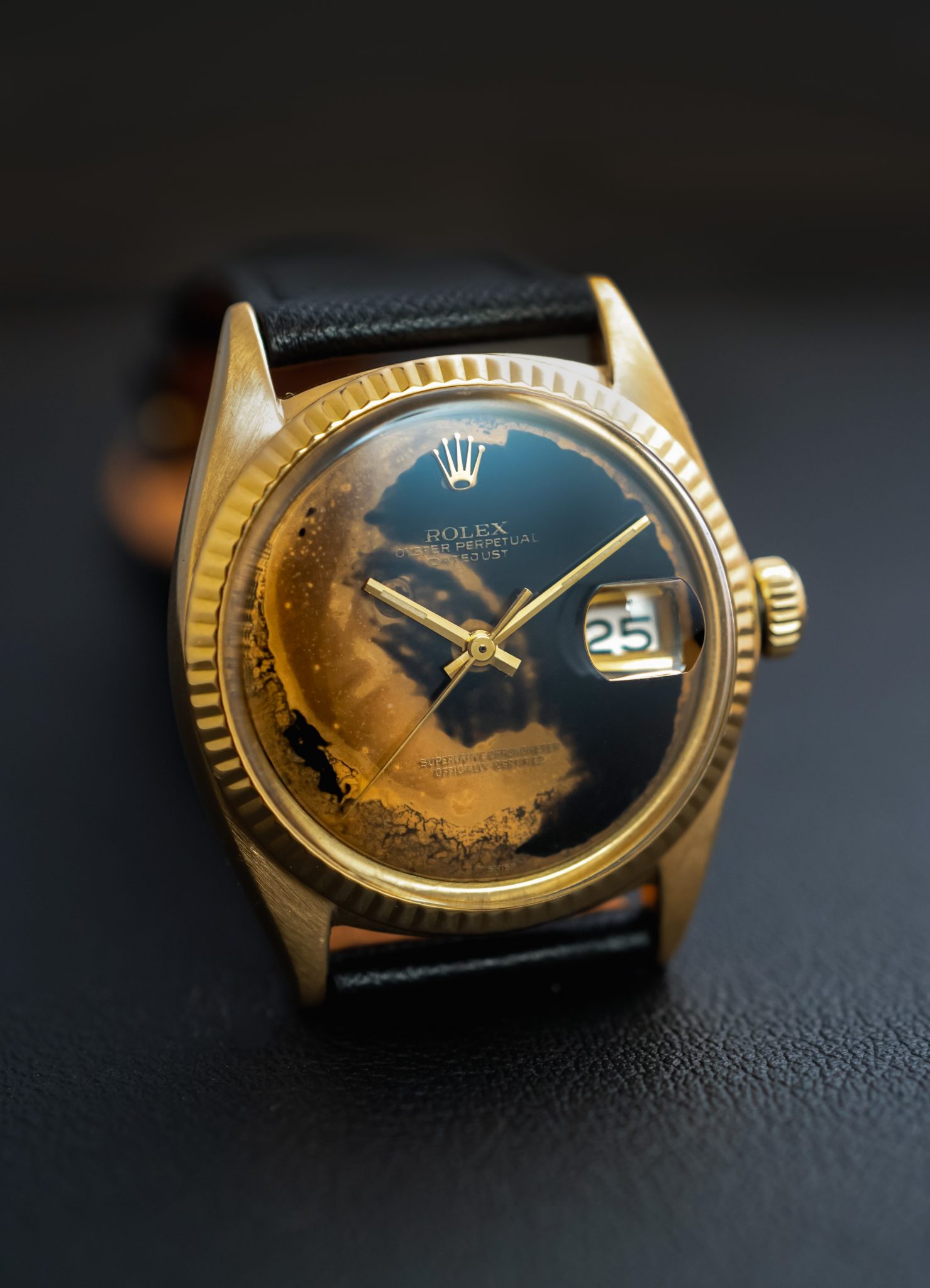
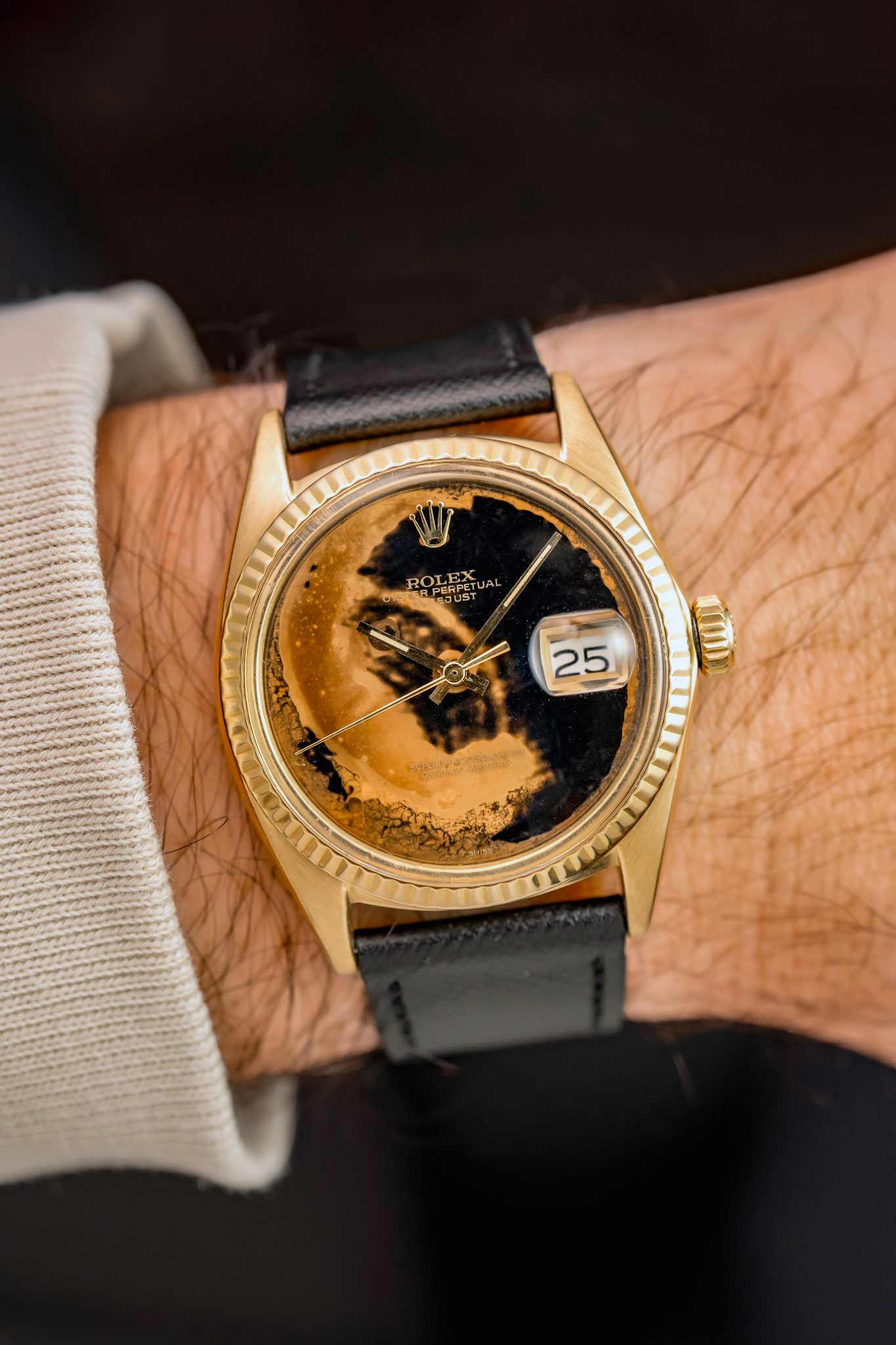
Let’s talk for a moment about how Rolex stone dials are made. These are not solid slabs of stone on a movement. They are stone adhered to a metal base that then fits onto the movement like a normal dial, bonded at the center. That’s true for lapis, onyx, and here. Obsidian itself is largely translucent with a bit of black, but can react and usually needs to be varnished before being bonded to anything. The leading theory for awhile was that this is stone, varnished and bonded with adhesive to the metal base, which reacted over time between the varnish and adhesive to lift and discolor the areas we see. This was supported by the fact that almost all examples have a ring of tan ‘reaction’ or ‘lifting’ around the handstack, which occurs too frequently between examples to be a natural veining in the stone. Far more likely, it seems, is that the adhesive de-bonded around the aperture and edges. Then things developed.
This was the leading theory and then we spoke with Eric Ku. The Oman example which traded from Loupe This in ’21 had concrete provenance from Rolex to the Royal family and then to Loupe This, with no intermediaries and documented. Ku was able to pull the dial to examine it. It didn’t look like obsidian. It looked like a black enamel, with thicker varnish than usual, opaque in some areas and translucent in others. It didn’t look like glass, but it also wasn’t bad. Yet the print, including the khanjar which is very hard to forge, is faultless and seemingly unimpeachably made by Rolex in the correct ink.

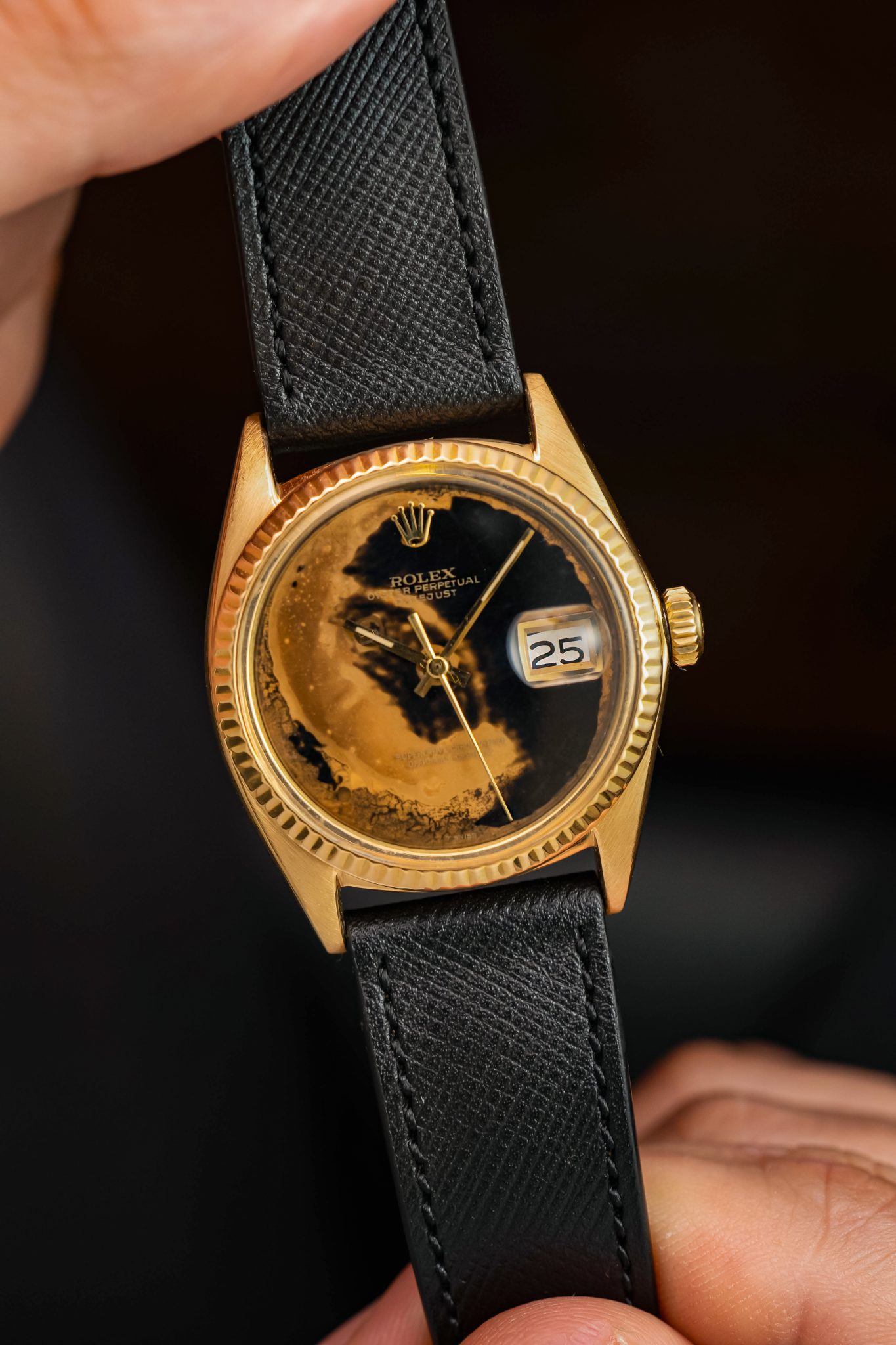
However, I then got Mr. Ku on the phone. And another theory has emerged since that sale, which to me seems to take all this nonsense and explain it perfectly. Onyx is, in nature, never jet black. Any time it’s used in serious jewelry, it’s dyed to be more even. A GIA gemologist confirmed this and it is common knowledge. Ku believes, and I do as well, that you’re looking at a Rolex onyx dial that’s discolored and reacted over time. Elaborating, Ku said ‘Another reason I’ve come to this conclusion is that a friend of ours had a Patek Philippe with a dial that looked just like one of these obsidian Rolexes and the Extract of Archive said it was an onyx dial.’ He believes it’s something close to delamination or discoloring over time. Why are there so few? Back in the day, dealers probably would’ve thrown these dials away. The final quote from Mr. Ku, ‘They’re ugly as fuck and the obsidian name is collector nonsense made up to create . . .whatever BS this is’.
Here are the possible conjectures as I see them now, in order of ascending likelihood. 3. They’re Fugazi. This seems unlikely to me going on quality of print, ink, and what was known about the Royal example. 2. They’re actually obsidian, where the varnish has reacted. This again seems unlikely for the actual appearance of the stone and how it presents in speaking to a gemologist. This simply doesn’t look like obsidian. And why are there so few? Why were they never in a Rolex catalogue if so? 1. They’re Onyx dials, warped and discolored by some process whether heat, moisture, UV, time, or some combination of the above. This, to me, seems most likely.





